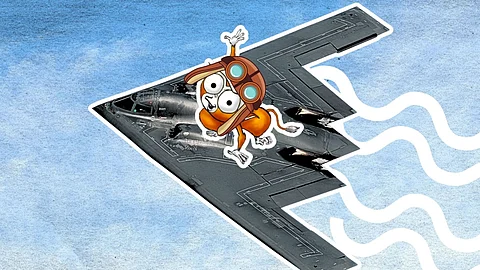
- NEWS
- the EDIT
- COMMENTARY
- BUSINESS
- LIFE
- SHOW
- ACTION
- GLOBAL GOALS
- SNAPS
- DYARYO TIRADA
- MORE

While the world stared west, the real action came from the east.
As U.S. President Donald Trump confirmed a “spectacular military success” against Iran’s key nuclear facilities, speculation grew about how American forces managed to strike the highly fortified sites in Fordow, Natanz, and Isfahan, without Iran or anyone else noticing until it was too late.
For nearly 24 hours before the attack, social media and open-source trackers buzzed with reports of six B-2 stealth bombers flying west from Whiteman Air Force Base in Missouri, heading toward Guam. Fox News’ Chief National Security Correspondent Jennifer Griffin, in a live broadcast, described these westward B-2s as part of “the deception” — a smoke screen for a far more precise operation.
“Those would never have reached Iranian airspace in time," said Griffin, speaking with anchor Bret Baier.
The misdirection was theatrical. According to Fox’s Lucas Tomlinson, the internet was alight Saturday morning with chatter of the six bombers flying over Hawaii, refueling in plain sight. It now appears those were the “ghosts” — meant to grab headlines and fool Tehran’s early-warning systems.
The real question: How did three, possibly more, stealth bombers reportedly take off, fly across half the globe, unload 30,000-pound bunker-buster bombs, and make it out without a single credible air defense alert in Iran?
That’s where the B-2 Spirit earns its name. These flying wings are radar-resistant and built for exactly this sort of mission, slipping past defense networks with tech so quiet, even satellites struggle to pick them up. If there were planes that could erase nuclear facilities before breakfast, it was these.
And the Pentagon, it seems, had been planning this for longer than anyone realized. As Griffin revealed, Whiteman Air Force Base had already declared a suspicious “closure for repairs” from 16 June to 23 June. That window? The exact timeline needed to hide the flight cycle of a top-secret bombing run to the Middle East.
In hindsight, it was all there. A closed air base. Misdirection through Pacific deployments. A president who "delayed" his decision, only to announce the strike hours later with the confidence of someone who had already sent the planes home.
Iran was expecting something. But it wasn’t expecting this.
By the time Iranian defenses scrambled, it was already too late. Fordow was burning. Natanz was hit. Isfahan, damaged. The planes? Gone.
The B-2s came and went like whispers in the dark. No radar caught them. No siren warned of their arrival. The strike, according to Trump, was “done in minutes.”
